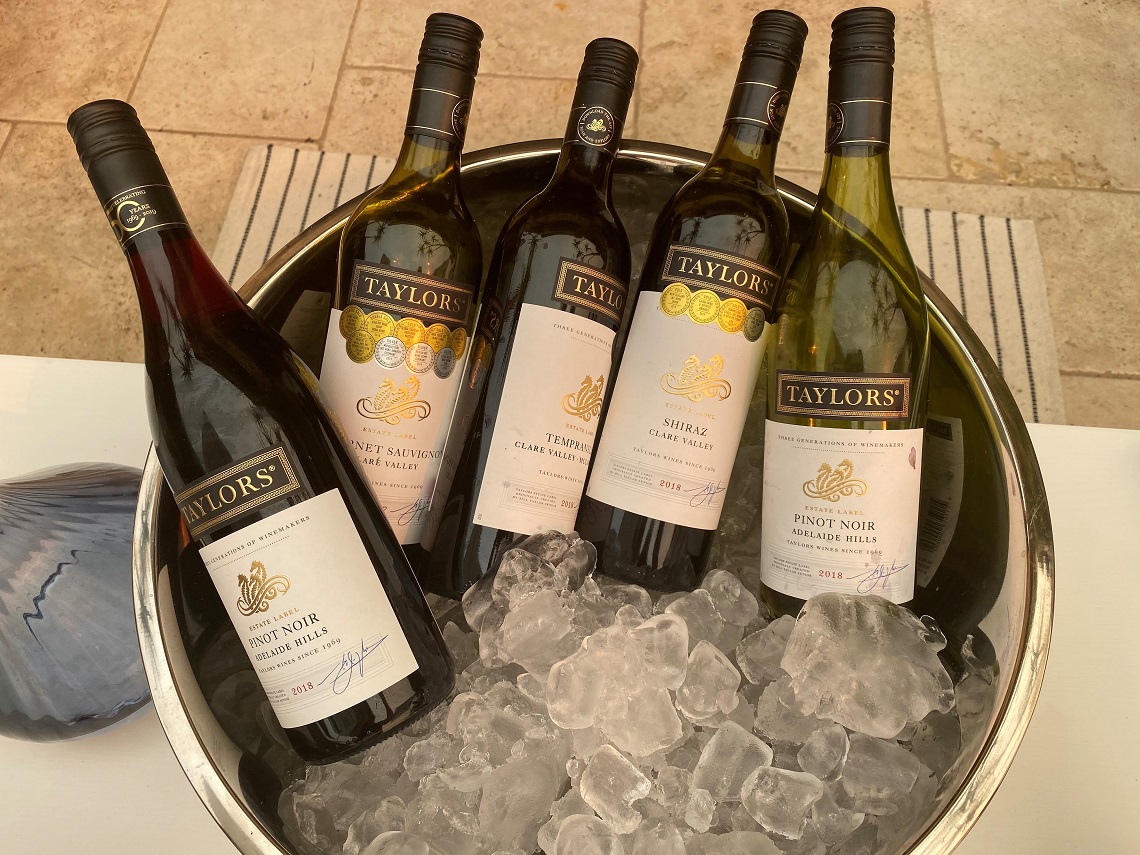Summer is well and truly underway in Australia, bringing with it our hottest and longest days of the year.
With the outside temperature at its peaks, so too climbs the room temperature indoors and with it, the temperature of unrefrigerated wine.
Many wine experts and enthusiasts believe that temperature greatly impacts the wine drinking experience. Often red wine is served straight from the shelf and white wine served straight from the fridge, resulting in two different extremes that can mask the subtle flavours of the liquids.
This is something that Taylor’s Wines have been campaigning to raise awareness about for years. Employing thermal technology on their labels, they have a special temperature sensing scale to educate drinkers of the optimum time to pour a glass.
Taylor’s is joined by lots of other winemakers in the belief that their wines should be consumed at the optimal temperature. Given the peaks of the Australian climate happen over summer, now is the perfect time to keep wine temperature in mind.
Optimal red temperatures
The idea behind serving red wine at room temperature came from medieval European castles, where the ambient temperature was much lower than Australian averages.
Considering the Bureau of Meteorology have predicted “drier and warmer than average conditions” for this summer, paying attention to what the room temperature actually is this season will prove vital in providing the optimal red wine drinking experience.
During summer, getting a bottle of red down to medieval room temperature will require some chilling on ice or in a fridge.
According to a Taylor’s Wine expert at a chilled tasting demonstration: “The usual home fridge temperature is two to four degrees on average, so I’d say pop it into the fridge for 30 to 40 minutes max. You just need a touch of chill on it.”
This slight chill helps the flavours of the red overcome the alcohol notes and showcase the rich aromas and taste that the winemaker intended.
The optimal range of temperatures for serving red wines ranges between 12 and 18 degrees Celsius, depending on the varietal. Lighter bodied reds like Pinot Noir are best on the cooler end of the scale, while their fuller bodied counterparts like Shiraz are best slightly warmer.
Optimal white temperatures
On a hot summer’s day, often what we crave is a nice cold and refreshing beverage, the colder the better. That’s often how beer is marketed to the local population, being icy and thirst quenching. But when applied to white wines, that idea can prove detrimental to taste and experience.
According to Vintec, experts in climate-controlled wine cellars and cabinets, serving white wines under five degrees Celsius will overly highlight the acidity of the wine and hide aromas.
This is also agreed to by winemakers, including Marco Panizzutti of St Maur wines in the NSW Southern Highlands.
Panizzutti writes that: “The ideal way to drink white wine is to take it out of the fridge 30 minutes prior to serving and put it on ice. This way you are ensuring you enjoy a chilled glass of white wine and the temperature will bring out the distinctive nose and characteristics of the wine.”
The general temperature range that is recommended for serving white wines is between six and 12 degrees, depending on the varietal. Non-vintage Champagnes and sparklings do better at the lower end of the scale, with full bodied whites and rosés showcased well at the higher end.
Keeping temperature in mind this summer will help give you, and your customers, the best possible wine experience. To see the difference for yourself, conduct your own experiment by tasting wines at different temperatures.
You can also learn from an expert at Taylor’s Summer House of Shiraz on Sydney Harbour this weekend only. Tickets are still available here.

